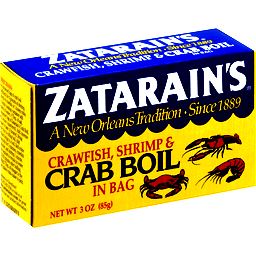SOUTHERN CONDIMENTS ON THE SOUTHERN SPREAD
Our culture, our history, our spirit, and our hospitality are some of the ingredients. Southern foods are heavily influenced by African, English, Scottish, Irish, French, and Native-American cuisine. Although most of them are served across the country today, there are foods in the U.S. strictly thought of as SOUTHERN. There’s Creole, Lowcountry, and Floribbean, and I’m not sure where fried chicken and deviled eggs fit into the mix, but they perform with a southern accent, to be sure. In “The Southern Spread,” we’re exploring southern foods and traditions.
Nothing incites an argument quicker than a political position, but if you’re just looking for a run-of-the-mill tiff, declare your favorite hot sauce to be the best there is. I don’t have any personal experience with brands from other parts of the country, but serious, even casual food enthusiasts everywhere are pretty opinionated about their preferred condiments. Southerners are dug in.

Hot sauces are definitely at the top of the list of condiments used regularly in the South, and Tabasco is a brand whose name is practically synonymous with the term hot sauce. I’m not really looking for a dispute over which is the best or hottest hot sauce, but it’s the variety I use the most—in a multitude of recipes— mainly, I suppose because it’s what I grew up with. I use it frequently to add some zip to all kinds of fare, not necessarily for the heat. That includes soups and other warm concoctions and cold dishes like dips and deviled eggs.
Tabasco is and always has been bottled on Avery Island in south Louisiana by the McIlhenny family. The original vinegar-based sauce uses the tabasco pepper, which originated in Central America, although the line also includes sauces made with chipotle, jalapeno, and habanero peppers. A trip to Avery Island is a unique day trip into the world of Tabasco that consists of a short lecture and film about the origin and production of the world-famous sauce. Naturally, there’s an opportunity to visit the company store that sells everything from varying sizes of the different Tabasco sauces—including bottles large enough to be statues and small enough to put in your top pocket—pot holders, hats, aprons, and a gazillion other collectibles printed with the recognizable logo.
Crystal Hot Sauce, bottled initially in New Orleans, is Tabasco’s neck ‘n neck competition. It’s also a vinegar-based sauce, but it’s made with cayenne peppers.
Alvin Baumer, the grandson of Dottie Brennan, one of the original proprietors of Commander’s Palace, acquired the recipe for Crystal Hot Sauce when he bought Mill’s Fruit Products, a sno-ball syrup company. It’s one hot sauce that can be found, sometimes alongside Tabasco, on tables of well-respected restaurants all across New Orleans and the Gulf Coast.
Hurricane Katrina destroyed Crystal’s 75-year-old manufacturing facility in New Orleans, at which point the company moved to a new, more modern, and workable facility in Reserve, Louisiana. A replica of the original Crystal Hot Sauce sign still marks the spot of the old factory in New Orleans.
Louisiana Hot Sauce has been bought by Southeastern Mills, Inc. in Georgia, but it’s still manufactured in New Iberia, Louisiana. It’s another brand with die-hard fans.
The hot sauces I’m most familiar with are all made in Louisiana. However, Texas boasts several top-notch brands, like Texas Pete, and several are manufactured in Georgia, North Carolina, and South Carolina. Everybody has one though that they’d put up against any other anywhere, and trying to argue them down about which one is better is like—well, you know.
To put some of these to practical use, here’s a quick recipe that uses Louisiana Hot Sauce, but any of the others listed above could probably be substituted—or not!?!

CAJUN FRIED CHICKEN
INGREDIENTS:
4 Cups Buttermilk
1 ½ cups Original Louisiana Hot Sauce, divided
2 Tablespoons cayenne pepper
1 ½ teaspoons garlic powder
1 teaspoon paprika
1 (4–5 pound fryer chicken, cut into eight pieces
4 cups fryer oil
1 package Shore Lunch Classic Fried Chicken Breading Mix https://shorelunch.com/products/classic-fried-chicken-breading-mix/
1 teaspoon onion powder
DIRECTIONS:
Add the buttermilk, 1 cup Hot Sauce, cayenne pepper, garlic powder, onion powder, and paprika to a large mixing bowl. Add the chicken pieces, cover, and refrigerate for 12 hours.
Add the oil to a large to or skillet and heat to 350 degrees.
Remove the chicken from the refrigerator; add the Breading Mix to a large plastic bag. Remove the chicken from the buttermilk mixture, shaking off the excess, and add the chicken to the Breading Mix, toss to coat.
Remove the chicken from the bag, shake off the excess, and carefully add to the oil. Cook the chicken in batches for 15–18 minutes or until the internal temperature reaches 165 degrees when checked with an instant-read thermometer. Make sure to turn the chicken halfway through the cooking time if not completely submerged in oil.
Carefully remove the chicken from the oil and brush with the remaining ½ cup Hot Sauce.
Serve immediately.
********************************
Onward to mayonnaise, another source of potential condiment conflict! Mayonnaise goes in and on practically everything in our southern culinary world. Every sandwich is slathered in a thick spread of it. Salads—potato, chicken, tuna—are held together with it. Deviled eggs and pimento cheese—a must-have ingredient—and all manner of casseroles, sauces, and dips depend on it for flavor. In the summer, a big glob of homemade mayo on a sliced, homegrown tomato makes the sultry weather that helps to grow the tomatoes almost worth the misery.

There’s Kraft, Blue Plate, Mrs. Filbert’s, Bama, Just Mayo, Hellman’s, and Duke’s that I can think of in the South. For most of my adult life, I’ve used Hellman’s mayonnaise exclusively until about five years ago when I discovered Duke’s. I don’t know if the stores in my area just didn’t carry Duke’s at the time, or if I just overlooked it, but there was no going back to Hellman’s once I’d tried it. Some pretty effective commercials, and chef Vivian Howard brought it to my attention. For me, it’s the next best thing to the homemade recipe that I use. Nothing really beats homemade mayonnaise, but, in my opinion, Duke’s is a good substitute. Some chefs are even known to use it in chocolate cake recipes to add moisture. Although Duke’s is third in popularity nationwide behind Hellman’s and Kraft, in the South, the Greenville, South Carolina creation pretty much holds the crown.
HOMEMADE MAYONAISE
INGREDIENTS:
1 whole egg
1 egg yolk
Juice of one lemon
Dash of Cayenne
1 teaspoon salt
1 teaspoon dry mustard
1 ¼ cup vegetable oil or olive oil
DIRECTIONS:
Combine the first six ingredients in the bowl of a food processor, and with the motor running, slowly drizzle the oil in. Refrigerate.
*****************************

Old Bay Seasoning for crab or shrimp boil is probably the nationwide favorite, but Zatarain’s would definitely get my vote. Not only is it my go-to for cooking boiled shrimp, but I use it in dips, and I add a little to my gumbo.
Zatarain’s, another New Orleans-based company, has a whole line of foods, but their crab boil and creole mustard are the best in their category for a lot of us. Creole mustard uses Dijon-style mustard as a base, with Worcestershire sauce and hot sauce added for spice, and ground mustard seeds. Grey Poupon makes a country Dijon mustard that’s a worthy substitute. Still, it would be a crying shame to use anything but a New Orleans-made product on a po’boy or in a creole remoulade sauce. Wouldn’t it?
Here’s an excellent place to put Zatarain’s Creole Mustard:
EMARIL LAGASSE’S CREOLE REMOULADE SAUCE
INGREDIENTS
- 1 large egg yolk
- 1/4 cup Creole Mustard
- 2 1/2 tablespoons red wine vinegar
- 1 tablespoon prepared horseradish
- 1 teaspoon kosher salt
- 1 teaspoon paprika
- 1/2 teaspoon cayenne pepper
- 1/4 teaspoon freshly ground black pepper
- 1 clove garlic, minced
- 3/4 cup vegetable oil
- 1/4 cup olive oil
- 1/2 cup finely minced celery
- 1/4 cup plus 2 tablespoons minced green onion
- 1/4 cup mayonnaise
- 1 tablespoon ketchup
- 1/4 teaspoon Worcestershire sauce
DIRECTIONS
- In a nonreactive mixing bowl, whisk together the egg yolk, mustard, vinegar, horseradish, 3/4 teaspoon of the salt, the paprika, cayenne, and black pepper. On a cutting board, mash the garlic and the remaining 1/4 of salt together, using the side of a chef’s knife to form a paste. Add the garlic paste to the bowl and whisk to combine.
- Combine the oils in a measuring cup with a pour spout, and while whisking continuously, drizzle the oil blend very slowly into the mustard mixture until a smooth, thick emulsion is formed. Whisk in the celery, green onion, mayonnaise, ketchup, and Worcestershire sauce. Chill thoroughly before using; the remoulade will keep for up to 4 days in the refrigerator.
It’s doubtful that the info here will change any minds about their preferred condiments, but that really wasn’t my intention. I just needed a topic for an article. But, this is making me hungry for a shrimp po’boy, which would incorporate the hot sauce, the mayo, the shrimp boil, AND the creole mustard—of my choice!
Photos: Deborah Fagan Carpenter


